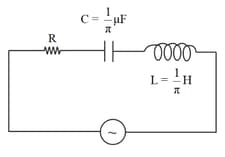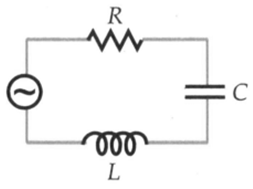S. L. Arora Solutions for Chapter: Alternating Current and Electrical Machines, Exercise 5: Problems For Practice
S. L. Arora Physics Solutions for Exercise - S. L. Arora Solutions for Chapter: Alternating Current and Electrical Machines, Exercise 5: Problems For Practice
Attempt the free practice questions on Chapter 1: Alternating Current and Electrical Machines, Exercise 5: Problems For Practice with hints and solutions to strengthen your understanding. PHYSICS A Reference Book for Class 12 Volume 2 solutions are prepared by Experienced Embibe Experts.
Questions from S. L. Arora Solutions for Chapter: Alternating Current and Electrical Machines, Exercise 5: Problems For Practice with Hints & Solutions
A capacitor, resistor of , and an inductor of are in series with an a.c. source marked . It is found that voltage is in phase with the current. Calculate the capacitance of the capacitor and the impedance of the circuit.
In the a.c. circuit shown in figure, the main supply has constant voltage but variable frequency. For what frequency will the voltage across the resistance be maximum?

An a.c Source of frequency hertz is connected to a inductor and a bulb. The bulb glows with some brightness. Calculate the capacitance of the capacitor to be connected in series with the circuit, so that the bulb glows with maximum brightness.
A long telegraph wire has a capacity of per . If it carries an alternating current of what should be the value of an inductance required to be connected in series so that impedance is minimum? Take .
A series circuit with , and is connected to a variable frequency source as shown in Figure.
(i) The angular frequency of the source which drives the circuit at resonance
(ii) The current at the resonating frequency
(iii) The rms potential drop across the inductor at resonance
A series -circuit is connected to an ac source The voltages across the resistor, capacitor and inductor are respectively and .
(i) The algebraic sum of the voltages across the three elements is greater than the voltage of the source. How is this paradox resolved?
(ii) Given the value of the resistance is calculate the current in the circuit.
An inductor of capacitor of and a resistor of are connected in series to an a.c. source of of variable frequency. Calculate:
(i) the angular frequency at which maximum power dissipation occurs in the circuit and the corresponding value of the effective current, and
(ii) the value of Q-factor in the circuit.
A sinusoidal voltage of peak value is applied to a series -circuit in which resistance, capacitance and inductance have values of and respectively. Find (i) the peak voltage across the inductor at resonance (ii) quality factor of the circuit.

